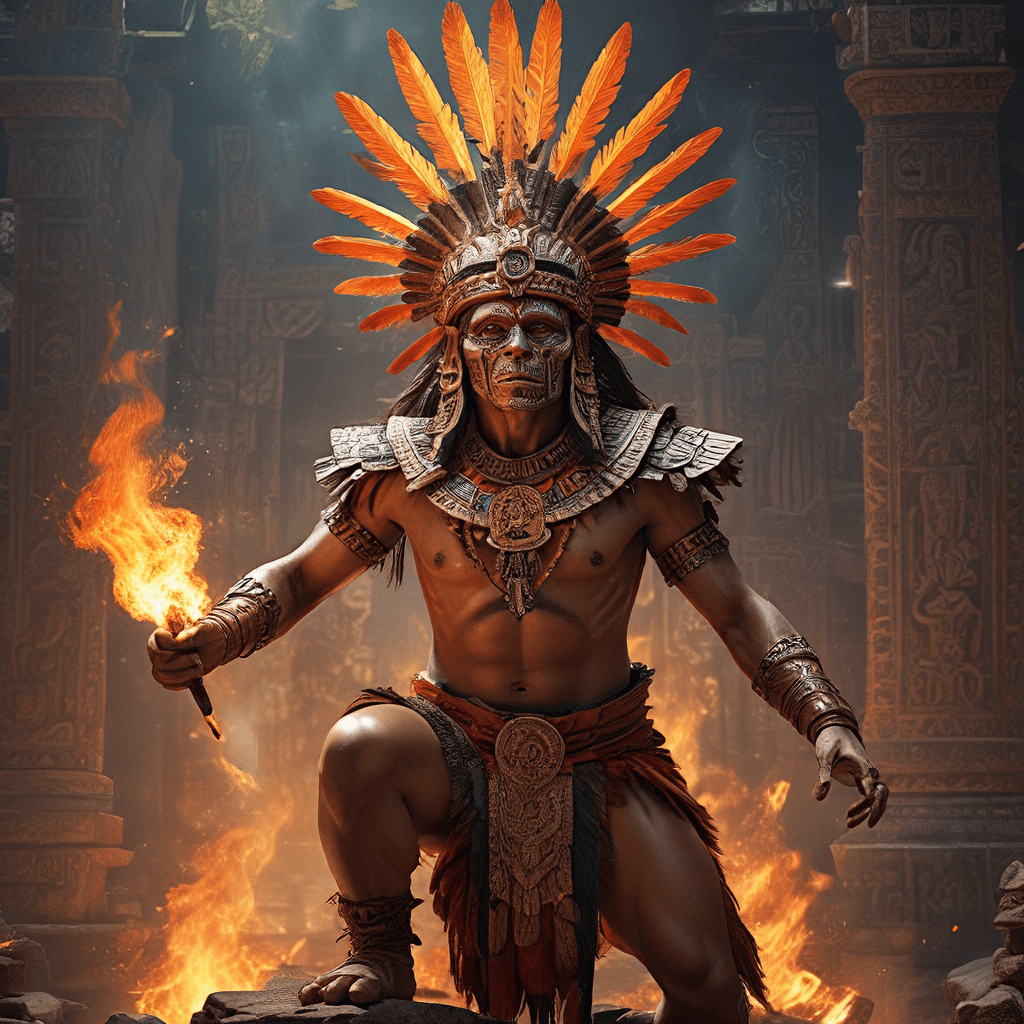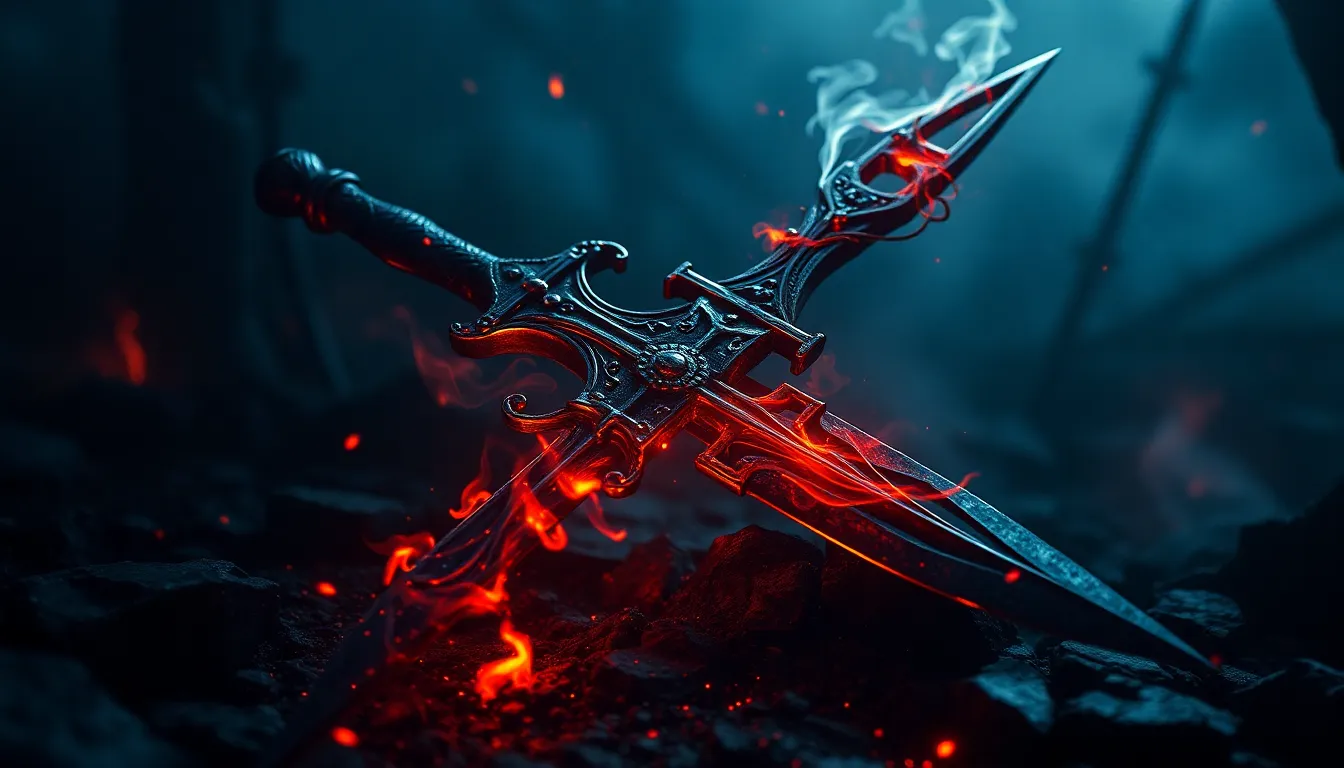Xiuhtecuhtli: The Fiery Heart of the Aztec Pantheon
In the rich tapestry of Aztec mythology, Xiuhtecuhtli stands as a deity of paramount importance, embodying the very essence of fire and its transformative power. Revered as the god of fire, hearth, dawn, and the precious metal, gold, Xiuhtecuhtli played a pivotal role in the lives of the Aztec people. His name, which translates to "Lord of the Turquoise," alludes to the vibrant color often associated with fire and its brilliance. Xiuhtecuhtli's influence extended beyond the physical realm, encompassing the spiritual and cosmic dimensions of their belief system.
The Embodiment of Fire and Life
Fire, a fundamental force of nature, held profound significance in Aztec culture. It was not merely a source of warmth and light; it was seen as the lifeblood of existence, symbolizing creation, destruction, and rebirth. Xiuhtecuhtli, as the god of fire, was inextricably linked to this fundamental element. He was believed to reside in the heart of the sun, a celestial fire that sustained all life on Earth. His presence was felt in every hearth, where families gathered to cook, socialize, and offer sacrifices.
The Aztec people recognized the duality of fire. It could be a destructive force, capable of consuming and incinerating. Yet, it could also be a source of warmth, cooking, and light, essential for life's sustenance. Xiuhtecuhtli, as the embodiment of fire, reflected this duality, serving as both a benevolent provider and a formidable destroyer.
The Creator and Destroyer: Dual Nature of Xiuhtecuhtli
Xiuhtecuhtli's dualistic nature was deeply interwoven into the Aztec cosmology. He was revered as the creator god, responsible for the birth of the sun, the source of life and energy. However, he was also feared as the god of destruction, capable of unleashing fiery wrath and consuming everything in his path.
This duality was evident in his iconography. He was often depicted as a skeletal figure with a skull-like face, symbolizing death and decay. Yet, he was also depicted with a fiery heart, representing the life-giving power of fire. This dualistic nature reflected the cyclical nature of existence in Aztec belief, where creation and destruction were seen as intertwined forces, essential for the ongoing process of life.
The God of the Obsidian Knife: A Symbol of Sacrifice
Xiuhtecuhtli's connection to fire extended beyond the physical world. He was also associated with sacrifice, a ritual practice central to Aztec religion. The obsidian knife, a sharp instrument used for human sacrifice, was believed to be a sacred artifact connected to Xiuhtecuhtli. The act of sacrifice involved giving blood to the gods, a ritual offering intended to appease them and ensure the continued existence of the world.
The obsidian knife, with its sharp edge, symbolized the cutting and separation of life, a necessary act in the Aztec worldview. The blood spilled during human sacrifice was believed to nourish the gods, particularly Xiuhtecuhtli, who was seen as the guardian of the hearth and the life-giving force of fire.
The Obsidian Mirror: Reflecting the Cycle of Time and Creation
The obsidian mirror, another sacred artifact connected to Xiuhtecuhtli, represented the cyclical nature of time and creation in Aztec belief. It was believed to reflect the past, present, and future, revealing the interconnectedness of all things.
The obsidian mirror was used by priests and shamans to communicate with the gods, seeking guidance and understanding of the mysteries of life and death. The smooth, reflective surface of the mirror was seen as a portal to other realms, reflecting the ever-changing patterns of the universe. Xiuhtecuhtli's connection to the obsidian mirror further solidified his role as a god who bridged the realms of the physical and the spiritual, the earthly and the divine.
The Turquoise Mask of Xiuhtecuhtli: A Symbol of Preciousness and Value
The turquoise mask was a prominent symbol associated with Xiuhtecuhtli, representing his power and prestige. Turquoise, a precious stone highly valued by the Aztecs, was believed to possess magical properties, connecting it to the divine. Its vibrant blue-green color was reminiscent of the sky and the dawn, reflecting the god's association with fire and the sun.
The turquoise mask was often adorned with intricate carvings and embellishments, further enhancing its symbolic significance. It was believed to embody the god's presence, serving as a conduit for communication with the divine. When worn by priests and shamans during rituals, the mask amplified their connection to Xiuhtecuhtli, allowing them to channel his power and wisdom. The turquoise mask, therefore, served as a visual representation of the god's power and the importance of fire in Aztec culture.
Xiuhtecuhtli and the Four Suns: The History of Life and Destruction
In Aztec cosmology, the world underwent several cycles of creation and destruction, each ruled by a different sun god. Xiuhtecuhtli is associated with the Fourth Sun, representing the current age. The previous suns, each representing a different era, were destroyed by various cataclysmic events, such as floods, fire, and earthquakes.
The Fourth Sun, overseen by Xiuhtecuhtli, was marked by the introduction of human sacrifice, a practice believed to appease the gods and prevent the world's destruction. The story of the Four Suns underscores the cyclical nature of existence in Aztec belief, illustrating the constant interplay of creation and destruction that shaped their understanding of the world.
The Sacred Fire Ritual: A Connection to the Divine
The sacred fire rituals played a vital role in Aztec religious practice, serving as a way to connect with the divine and appease the gods. These rituals involved tending the sacred fire, a symbol of Xiuhtecuhtli's presence, and offering sacrifices, such as food, incense, and even human blood.
The sacred fire was kept burning constantly in temples and homes, serving as a reminder of the god's power and the importance of fire in maintaining life. The rituals ensured the god's favor, seeking his protection and guidance. These rituals were not simply symbolic acts but were believed to have real power, impacting the world and ensuring the continued existence of humanity.
Theories Regarding the Origins of Xiuhtecuhtli
The origins of Xiuhtecuhtli are debated by scholars, with various theories proposed to explain his emergence in Aztec mythology. Some scholars believe that Xiuhtecuhtli was an earlier deity absorbed into the Aztec pantheon, possibly representing a deity of fire worshiped by earlier Mesoamerican civilizations.
Others suggest that Xiuhtecuhtli's role as the god of fire emerged from the Aztecs' deep connection to the element, its crucial role in their daily lives, and its association with creation, destruction, and rebirth. Regardless of his origins, Xiuhtecuhtli played a central role in Aztec religion, encompassing the essence of fire and its transformative power.
Xiuhtecuhtli in Aztec Art and Iconography
Xiuhtecuhtli is often depicted in Aztec art and iconography, providing insights into his attributes and symbolic meaning. He is typically portrayed as a skeletal figure with a skull-like face, representing death and decay, but also with a fiery heart, symbolizing the life-giving power of fire.
He is frequently shown holding a turquoise mask or adorned with turquoise ornaments, emphasizing his association with this precious stone. Representations of Xiuhtecuhtli often feature obsidian knives, symbolizing sacrifice and the cutting of life, and obsidian mirrors, reflecting the cyclical nature of time and creation.
The intricate carvings and details of these depictions convey the complexity of the god's character and the significance of fire in Aztec culture. These artistic representations served as powerful reminders of Xiuhtecuhtli's presence, reinforcing his importance in their religious beliefs and daily lives.
FAQ
Q: What is the meaning of Xiuhtecuhtli's name?
A: Xiuhtecuhtli's name translates to "Lord of the Turquoise," alluding to the precious stone associated with fire and its brilliance.
Q: Why was fire so important to the Aztecs?
A: Fire was seen as the lifeblood of existence, symbolizing creation, destruction, and rebirth. It provided warmth, light, and was essential for cooking and sustaining life.
Q: What are some of the symbols associated with Xiuhtecuhtli?
A: Symbols associated with Xiuhtecuhtli include the turquoise mask, the obsidian knife, the obsidian mirror, and the fiery heart.
Q: What was the role of human sacrifice in Aztec religion?
A: Human sacrifice was a central ritual practice, believed to appease the gods, particularly Xiuhtecuhtli, and ensure the continued existence of the world.
Q: How was Xiuhtecuhtli linked to the concept of time and creation?
A: Xiuhtecuhtli was associated with the Fourth Sun, representing the current age in the Aztec cosmology. His connection to the obsidian mirror reflected the cyclical nature of time and creation.



